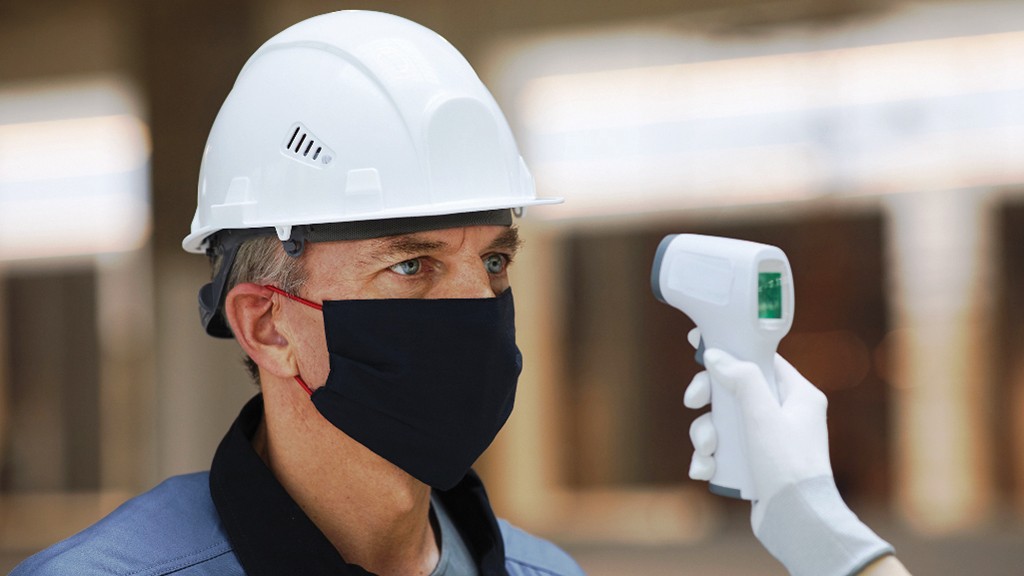
The importance of health and safety in the workplace has taken on a whole new meaning since the COVID-19 virus was declared an official pandemic on March 11, 2020.
In addition to severe impacts on the economy and changes to how businesses operate and employees work on a daily basis, COVID-19 has also introduced a host of other challenges such as an increase in substance use and mental health concerns.
In response to the global pandemic, employers must take a number of measures to keep workers safe and ensure business continuity. This includes updating health and safety policies to protect workers from potential exposure, communicating these updates regularly, keeping workers apprised of the latest regulations, putting resources and measures in place to ensure new safety measures are practiced, and engaging in pandemic planning.
Duties of the employer
At the heart of provincial health and safety legislation is the assertion that employers have a duty to keep workers and workplaces safe and free of hazards. Workers have the right to refuse unsafe work and if health and safety concerns are not resolved internally, a worker can seek enforcement by filing a complaint. Employers must take all practical measures to protect workers from hazards posed by infectious disease exposure in the workplace. They must also ensure that workers are informed of hazards by providing information, instructions and supervision on how to work safely.
Customizing health and safety policies in response to COVID-19
To keep workers, customers, visitors and vendors safe during the COVID-19 pandemic, companies must update their health and safety policies to include protocols specifically aimed at preventing the spread of the pandemic and reducing risk. When updating health and safety policies, employers should, at a minimum, consider the following:
Provide guidance on regular and thorough handwashing and sanitization. Encourage workers to avoid touching their face;
Insist that workers practice social distancing by maintaining a two-metre distance from other people including other workers, customers, visitors and vendors;
Create a mandatory guideline requiring workers to wear masks whenever at risk of coming closer than two metres to another person and inside all public buildings and businesses. Depending on the worksite, protective gloves may also be required;
Create guidelines for ensuring workers maintain a clean work station, which may include a desk area, vehicle or other work environment. Guidelines must be supported with proper supply of sanitation products such as disinfectant sprays and wipes;
In some environments, workers should change out of work clothing before leaving the worksite at the end of their shifts. Additionally, clothes should be handled carefully and washed thoroughly;
Create capacity limits for indoor areas and controlled worksites to allow for proper social distancing;
Establish rotating and alternating lunch and break periods to minimize or eliminate isolated team crossover and crowding.
Addressing escalating substance use
Substance use, even outside of working hours, can have an impact on work performance and safety through its after effects. Employers should engage in active diligence to protect the health and safety of workers. Substance use policies should be reviewed and highlighted, and employers should consider the following:
Ensure your health and safety policies are thoroughly communicated across the organization. Health and safety should be an integral component of organizational culture;
Schedule health and safety briefings and toolbox talks for all staff, with a focus not only on COVID-19 but on general employee health and welfare. Address substance use disorders directly with staff;
Ensure supervisors and managers are trained and equipped to support substance use policies and recognize warning signs that may indicate a substance use disorder. Education and training should also be provided regarding next steps once evidence of impaired behaviour or a substance use disorder has been identified;
Provide employees that have a substance use disorder with access to services and work accommodations to assist in overcoming the dependency.
Communicating revised or new policies and procedures
Creating sound policies and procedures in light of the current pandemic is only the first step. If these guidelines are not effectively communicated across the entire company, they will not be effective. Communication is an integral component of achieving an injury-free workplace and protecting employees from the spread of the pandemic.
Here are some suggestions for effectively communicating your company's approach to managing the COVID-19 pandemic:
Post safety messaging in key areas throughout the workplace. Ideal locations include those where employees punch in, take breaks, are around equipment and any other high-traffic areas;
Hold toolbox talks regularly. Communicate that they are mandatory for all workers, and make them a part of the daily routine;
Add health and safety to training and knowledge refresher meetings;
Share case studies or incident reports. This is an effective means to emphasize the reality behind the need for stricter safety protocols;
Keep workers apprised of upcoming regulations and guidelines as well as current news and government announcements. Share this information through regular emails, and small group meetings, held virtually where possible;
Strike a balance between protecting the privacy and human rights of workers while keeping track of employees in case an outbreak occurs where contact tracing is required;
Communicate emergency leave provisions as they may apply to COVID-19.
Equip workers with the tools they need to stay safe
For workers to stay safe and companies to minimize the risk of business disruption, it's important to provide access to required resources. This might include equipping remote worksites with portable handwashing stations and/or alcohol-based hand sanitizer; making boot sanitizing stations available; implementing partitions to facilitate social distancing; and providing the required personal protective equipment to reduce risk, including masks, goggles, shields and gloves. Encourage feedback from your workers if they feel they are lacking the necessary resources and supplies to stay safe.
Implement mandatory screening as required by government
Individual provinces require employers to conduct COVID-19 screening with their employees based on questions provided by the government. Failure to conduct screening as directed by the province can lead to charges and significant fines.
This generally requires employers to implement screening for any workers or essential visitors entering the work environment; ensure that screening occurs before or when a worker enters a workplace at the beginning of their day; and ensure that those who don't pass the screening do not enter the workplace and are advised to self-isolate, call their health care provider and report to the provincial health authority.
Employers should keep an electronic or paper record of all answers provided to the questions, and collect completed forms from each worker on a daily basis.
Turn your attention to pandemic planning
The widespread nature of the COVID-19 pandemic has made it clear, now more than ever, that companies must have a documented pandemic preparedness plan in place. For employers who've already prepared for influenza pandemics, planning for COVID-19 may involve updating plans to address the specific exposure risks, routes of transmission and other unique characteristics.
Employers who have not prepared for pandemic events should begin preparing themselves and their workers as far in advance as possible of potentially worsening outbreak conditions. Lack of continuity planning can result in insufficient resources and leave workers inadequately trained for tasks they have to perform under pandemic conditions. It is essential that pandemic planning involve all key company stakeholders and that the plan is widely communicated across the company, while encouraging feedback.
When it comes to staying safe in a global pandemic, we're all in this together.
Kevin Vine is president of multiVIEW Locates Inc.



